Tony Ho Tran
Wed, August 10, 2022

David Merron via Getty
Are you a fan of the 1995 film Waterworld starring Kevin Costner? Great news: There’s a distinct possibility that it’ll become a reality in the future if humanity can’t get its act together to prevent climate catastrophe!
In a new paper published August 10 in the journal Nature, a team of Australian scientists found that sea levels could rise a staggering five meters by the year 2500 if we fail to meet the goals set in the Paris Climate Agreement. Specifically, the ice melt would come from the East Antarctic Ice Sheet (EAIS), one of two massive ice sheets on the southernmost continent that scientists have ominously dubbed a “sleeping giant” due to its potential to wreak havoc on sea level rise.
The Paris Agreement’s goal is to limit global temperature rise to two degrees Celsius or below (ideally 1.5 degrees Celsius). If it rises any higher, things could get very dicey, very quickly.
“The EAIS is 10 times larger than West Antarctica and contains the equivalent of 52 meters (170.6 feet) of sea level,” Nerilie Abram, an earth scientist at Australia National University and co-author of the paper, said in a press release. In other words, the ice shelf has more than enough water to flood the world well into “Waterworld” territory if it completely melts.
“If temperatures rise above two degrees Celsius beyond 2100, sustained by high greenhouse gas emissions, then East Antarctica alone could contribute around one to three meters (three to 10 feet) to rising sea levels by 2300 and around two to five meters by 2500,” Abram explained.
There is some glimmer of hope, though. If we manage to keep global warming in check and meet the Paris Agreement targets, then the sleeping giant ice shelf is only expected to contribute less than half a meter of sea level rise by 2500. That’s not nothing, but it’s certainly a lot less than the 16 feet rise that would spell disaster to coastline communities and ecosystems across the globe.

An illustration showing regions of the Americas that would be completely flooded if sea levels rose by five meters.
ROWLEY ET AL. 2007
The Inflation Reduction Act, which was passed on August 7, is also expected to be the largest investment by the U.S. in fighting global warming to date. With a $369 billion investment in clean energy, it’s slated to reduce U.S. greenhouse gas emissions by 40 percent below 2005 levels by 2030. By the end of the decade, emissions could be reduced by as much as 50 percent.
However, our timeline to accomplish this is shrinking faster than an ice cube under the summer sun. In fact, compounding issues related to climate change including sea level rise due to ice melt elsewhere and warming ocean waters are exponentially increasing the chances of the EAIS melting faster.
“We used to think East Antarctica was much less vulnerable to climate change, compared to the ice sheets in West Antarctica or Greenland, but we now know there are some areas of East Antarctica that are already showing signs of ice loss,” Abram said. “This means the fate of the world’s largest ice sheet very much remains in our hands.”
Fate of the world's biggest ice sheet is in our hands, scientists say
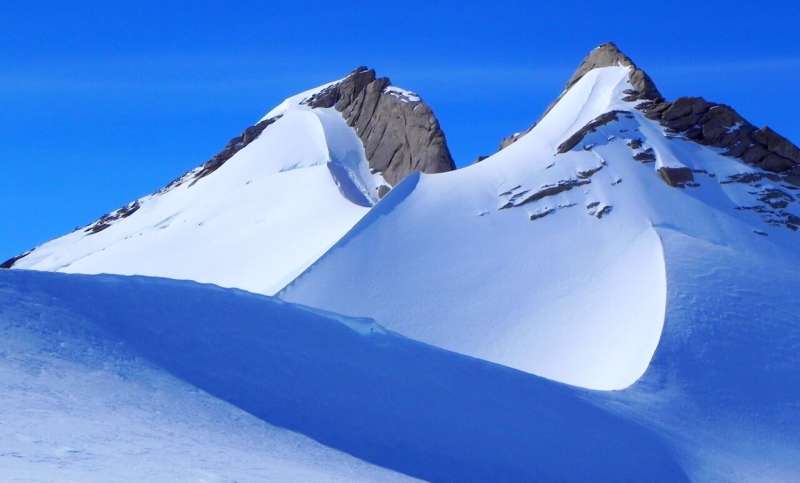
The fate of the world's biggest ice sheet still rests in our hands if global temperature increases are kept below the upper limit set by the Paris Agreement on climate change.
A new study led by Durham University, UK, shows that the worst effects of global warming on the East Antarctic Ice Sheet (EAIS) could be avoided if temperatures do not rise by more than 2°C above pre-industrial levels.
Staying below this limit would see the EAIS—which holds the vast majority of Earth's glacier ice—contribute less than half a meter to sea level rise by the year 2500, the researchers say.
However, they add that if warming continues to increase beyond the 2°C limit, we could potentially see the EAIS contribute several meters to sea-level rise in just a few centuries.
The research team, which included scientists from the UK, Australia, France and the U.S., has published its findings in the journal Nature.
To assess the sensitivity of the EAIS, they looked at how the ice sheet responded to past warm periods, as well as examining where changes are currently occurring.
They then analyzed a number of computer simulations made by previous studies to examine the effects of different greenhouse gas emission levels and temperatures on the ice sheet by the years 2100, 2300 and 2500.
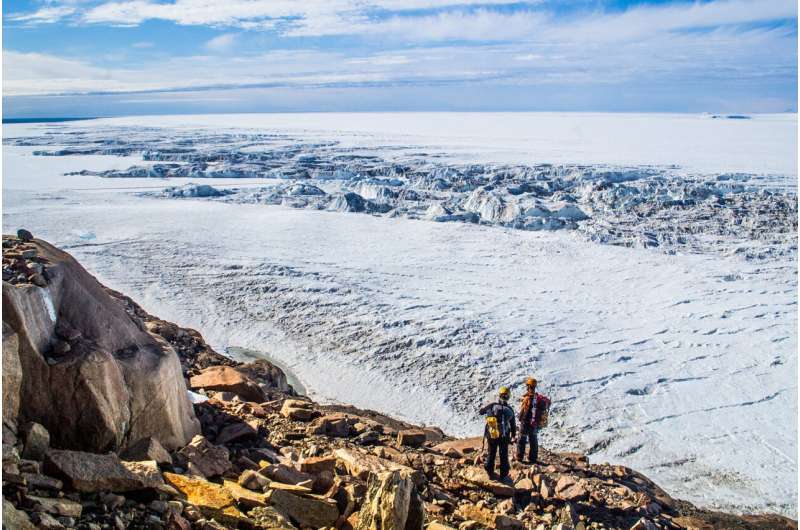
Lead author Professor Chris Stokes, of the Department of Geography, Durham University, UK, said: "A key conclusion from our analysis is that the fate of the East Antarctic Ice Sheet remains very much in our hands.
"This ice sheet is by far the largest on the planet, containing the equivalent of 52 meters of sea level and it's really important that we do not awaken this sleeping giant.
"We used to think East Antarctica was much less vulnerable to climate change, compared to the ice sheets in West Antarctica or Greenland, but we now know there are some areas of East Antarctica that are already showing signs of ice loss. Satellite observations have revealed evidence of thinning and retreating, especially where glaciers draining the main ice sheet come into contact with warm ocean currents."
The team's analysis shows that if warming continues beyond 2100, sustained by high emissions, then East Antarctica could add several meters to global sea level rise over the coming centuries. This would add to the substantial contributions from Greenland and West Antarctica and threaten millions of people worldwide who live in coastal areas.
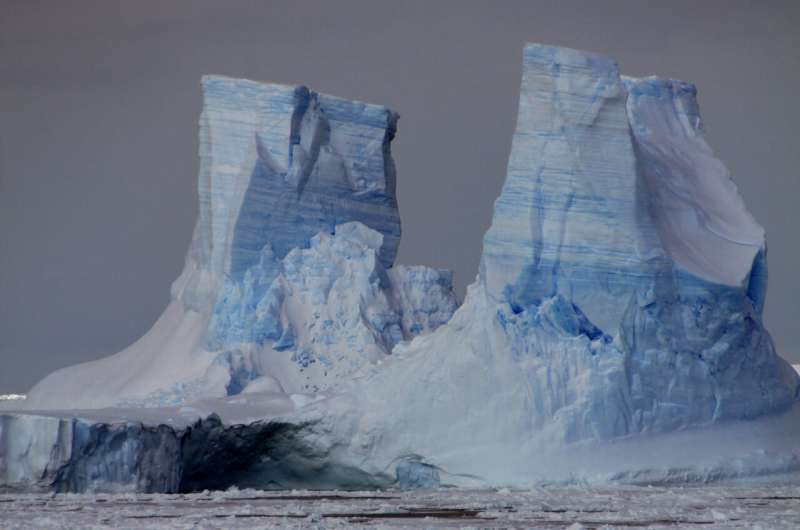
Professor Stokes added: "Restricting global temperature increases to below the 2°C limit set by the Paris Climate Agreement should mean that we avoid the worst-case scenarios, or perhaps even halt the melting of the East Antarctic Ice Sheet, and therefore limit its impact on global sea level rise."
When world leaders met at the 2015 UN Climate Change Conference in Paris, they agreed to limit global warming to well below 2°C and pursue efforts to limit the rise to 1.5°C.
According to the most recent Intergovernmental Panel on Climate Change (IPCC) report, published last year, human activity has already increased global mean temperatures by about 1.1°C since pre-industrial times.
The Durham-led study showed that with dramatically reduced greenhouse gas emissions and only a small rise in temperature, the EAIS might be expected to contribute around two centimeters of sea level rise by 2100—much less than the ice loss expected from Greenland and West Antarctica. Indeed, some research shows that snowfall has increased over East Antarctica in the last few decades and, if this continues, it will offset some of the expected ice losses over the next century.
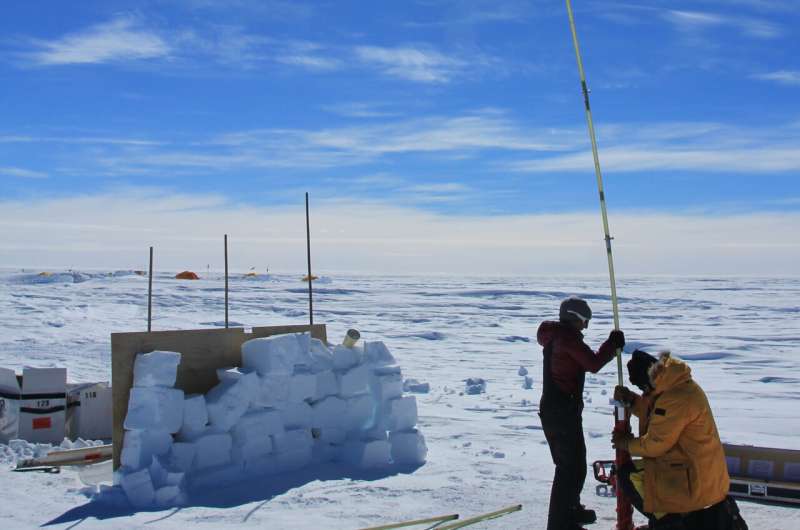
If the world instead continues on a pathway of very high greenhouse emissions, the researchers could not rule out the possibility of the EAIS contributing nearly half a meter to sea levels by 2100, but viewed this as very unlikely.
If emissions remain high beyond 2100 then the EAIS could contribute around one to three meters to global sea levels by 2300, and two to five meters by 2500.
Crucially, if the target of the Paris Agreement is met, significant ice loss from East Antarctica could be reduced or even prevented, with the EAIS's contribution to sea-level rise remaining below half a meter by 2500.
The researchers also reviewed how the ice sheet responded to past warm periods, when carbon dioxide concentrations and atmospheric temperatures were only a little higher than present.
They said that unlike the very rapid and extreme warming that we have experienced over the last few decades, that can only be explained by greenhouse gas emissions from human activity, past warming occurred over much longer timescales and was largely caused by changes in the way the Earth orbits the Sun.
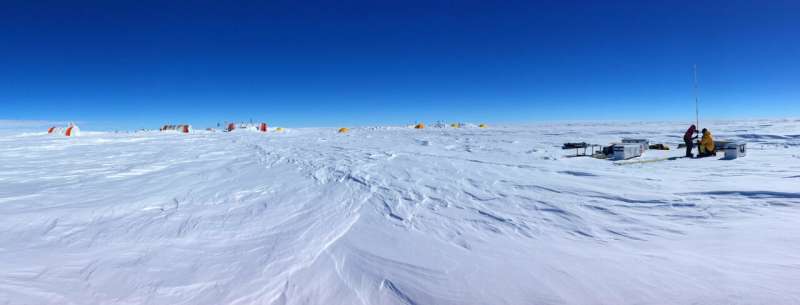
For example, the last time that carbon dioxide concentrations exceeded the current value of 417 parts per million was during a period known as the mid-Pliocene, around three million years ago. Temperatures were only 2-4°C higher than present at that time—in the range of the temperature changes we could experience later this century—but global mean sea level eventually reached 10-25 meters higher. Worryingly, evidence from sea-floor sediments around East Antarctica indicates that part of the ice sheet collapsed and contributed several meters to sea level rise during the mid-Pliocene.
Even as recently as 400,000 years ago, not that long ago on geological timescales, there is evidence that a part of the EAIS retreated 700 km inland in response to only 1-2°C of global warming.
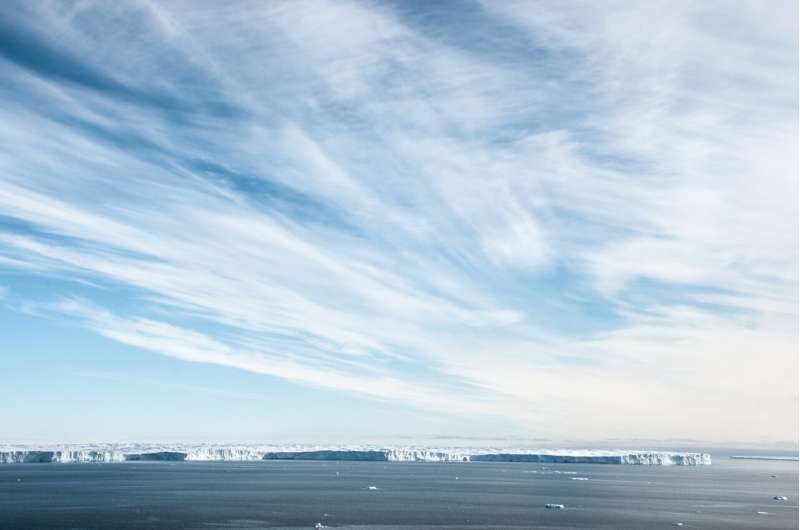
Professor Nerilie Abram, a co-author of the study from the Australian National University in Canberra, said: "A key lesson from the past is that the East Antarctic Ice Sheet is highly sensitive to even relatively modest warming scenarios. It isn't as stable and protected as we once thought.
"We now have a very small window of opportunity to rapidly lower our greenhouse gas emissions, limit the rise in global temperatures and preserve the East Antarctic Ice Sheet.
"Taking such action would not only protect the East Antarctic Ice Sheet, but also slow the melting of other major ice sheets such as Greenland and West Antarctica, which are more vulnerable and at higher risk.
"Therefore, it's vitally important that countries achieve and strengthen their commitments to the Paris Agreement."
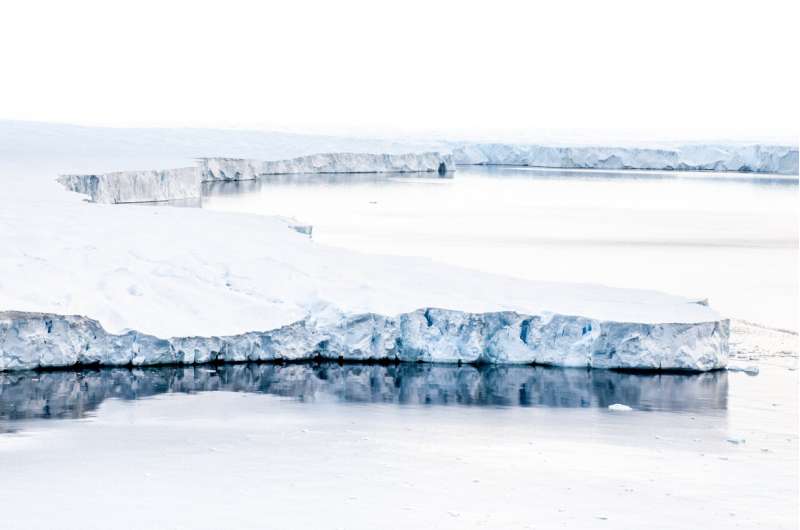
The research was led by Durham University working with King's College London, and Imperial College, London (UK); the Australian National University, University of New South Wales, University of Tasmania and Monash University (Australia); Université Grenoble Alpes (France); the University of Colorado Boulder, NASA Goddard Space Flight Center and Columbia University (U.S.).Antarctic ice's deep past shows it could be more vulnerable to warming
More information: Chris Stokes, Response of the East Antarctic Ice Sheet to past and future climate change, Nature (2022). DOI: 10.1038/s41586-022-04946-0. www.nature.com/articles/s41586-022-04946-
Journal information: Nature
Provided by Durham University
An ice sheet that holds about 80 per cent of the world's glacier ice has the potential to cause global sea levels to rise by up to 16 feet (five metres) by 2500.
Scientists have predicted that melting of the East Antarctic Ice Sheet (EAIS) will result in this increase if temperatures continue to rise at the current rate.
This warming of about 0.32°F (0.18°C) per decade is the result of humanity's increase in greenhouse gas emissions since the Industrial Revolution.
Researchers from Durham University modelled the effects different temperatures and levels of emissions would have on the ice sheet in the next few centuries.
If no change is made to slow the warming, the EAIS could contribute up to ten feet (three metres) to global sea levels by 2300.
The melting could be limited significantly if emissions targets are met that see global temperature rise limited to 3.6°F (2°C) above pre-industrial levels.
The EAIS could then only contribute about 0.8 inches (two centimetres) of sea level rise by 2100, and 1.6 feet (0.5 metres) by 2500.

Thickness of ice in Antarctica, showing the location of the East Antarctic Ice Sheet (red outline), which holds the equivalent of 52 metres of sea level rise (alongside the UK and Ireland at the same scale). Wilkes Land (highlighted) has been referred to as East Antarctica’s ‘weak underbelly’, where some glaciers appear to be thinning, retreating and losing mass due to warm ocean currents

Scientists have predicted that melting of the East Antarctic Ice Sheet (EAIS) will result in this increase if temperatures continue to rise at the current rate. Pictured: Ice cliff at the terminus of Vanderford Glacier, Wilkes Land, East Antarctica
WHY IS CURRENT GLOBAL WARMING DIFFERENT TO HOTTER PERIODS IN HISTORY?
Previous periods of warming, that are similar to what the Earth is experiencing today, occurred over hundreds of thousands of years.
About 300,000 years ago, during the mid-Pliocene, temperatures were only between 1.3°F and 3.6°F (2°C and 4°C) higher than present.
This period of warming occurred gradually over 300,000 years and is thought to have been caused by changes in the way the Earth orbits the sun.
However, evidence of today's global warming indicates it just under 200 years ago.
The Earth's average surface temperature has increased rapidly by about 1.8°F (1.0°C) since the late 1800s.
This can be explained by the increase in our greenhouse gas emissions since the industrial revolution.
Lead author Professor Chris Stokes said: 'We used to think East Antarctica was much less vulnerable to climate change, compared to the ice sheets in West Antarctica or Greenland, but we now know there are some areas of East Antarctica that are already showing signs of ice loss.
'Satellite observations have revealed evidence of thinning and retreating, especially where glaciers draining the main ice sheet come into contact with warm ocean currents.
'This ice sheet is by far the largest on the planet, containing the equivalent of 52 metres of sea level and it's really important that we do not awaken this sleeping giant.'
Ice sheets in Greenland and West Antarctica were already predicted to lose ice in the centuries to come.
Greenland is far away from the North Pole so is exposed to warm air, and West Antarctica is affected by warm ocean currents as it sits below sea level.
However the EAIS is home to the staggeringly cold South Pole, and it is located on land that shields it from the sea's warmth, so it was widely assumed to be more solid.
But in 2020, evidence was found that a part of the EAIS retreated 435 miles (700 km) inland just 400,000 years ago - not that long ago on geological timescales.
This was in response to only 1.8-3.6°F (1-2°C) of warming.
In the study, published today in Nature, researchers from the UK, Australia, France and the USA examined how the EAIS responded to periods of warmth and high carbon dioxide concentrations in the past.
Around three million years ago, during the mid-Pliocene, temperatures were only between 3.6°F and 7.2°F (2°C and 4°C) higher than present.
This range of temperature change is one we could experience later this century.
However, global sea levels in the mid-Pliocene were between 33 and 82 feet (10 and 25 metres) higher than they are now.
Evidence from sea-floor sediments around East Antarctica indicates that part of the ice sheet collapsed and contributed several metres to this.
Carbon dioxide concentrations in that period also only slightly exceeded the current value of 417 parts per million.
This period of warming occurred over a very long timescale - about 300,000 years according to NASA - and is thought to have been caused by changes in the way the Earth orbits the sun.
However current global warming has only been felt for the last few decades, which can only be explained by greenhouse gas emissions from human activity.
Next, the team analysed computer simulations made by previous studies to examine what effects different levels of emissions and temperatures would have on the ice sheet.
If warming continues at its current rate, sustained by high greenhouse gas emissions, the EAIS could contribute nearly half a metre to sea levels by 2100.
Additionally, if it continues beyond 2100, it could contribute around three to ten feet (one to three metres) to global sea levels by 2300, and 7 to 16 feet (two to five metres) by 2500.
This would add to the substantial contributions from Greenland and West Antarctica and thermal expansion of the ocean, threatening millions of people worldwide who live in coastal areas.


Professor Nerilie Abram, from the Australian National University, said: 'We now have a very small window of opportunity to rapidly lower our greenhouse gas emissions, limit the rise in global temperatures and preserve the East Antarctic Ice Sheet
However, in 2015 new targets were agreed upon by world leaders that attended the UN Climate Change Conference in Paris.
They agreed to limit global warming to well below 3.6°F (2°C) and pursue efforts to limit the rise to 2.7°F (1.5°C) by reducing their countries' greenhouse gas emissions.
The international researchers found that, if these targets are met, the worst effects of global warming on the world's largest ice sheet could be avoided.
The EAIS might be thus expected to contribute only about 0.8 inches (two centimetres) of sea level rise by 2100 and 1.6 feet (0.5 metres) by 2500.
Some research shows that snowfall has increased over East Antarctica in the last few decades and, if this continues, it will offset some of the expected ice losses over the next century.
However the researchers say sea levels will still rise due to unstoppable ice losses from Greenland or West Antarctica.

If the Paris Agreement targets for global temperature increase are met, the worst effects on the world's largest ice sheet could be avoided. The EAIS might be thus expected to contribute only about 0.8 inches (two centimetres) of sea level rise by 2100 and 1.6 feet (0.5 metres) by 2500. Pictured: Iceberg towers from the East Antarctic Ice Sheet
Professor Nerilie Abram, a co-author of the study from the Australian National University in Canberra, said: 'A key lesson from the past is that the East Antarctic Ice Sheet is highly sensitive to even relatively modest warming scenarios. It isn't as stable and protected as we once thought.
'We now have a very small window of opportunity to rapidly lower our greenhouse gas emissions, limit the rise in global temperatures and preserve the East Antarctic Ice Sheet.
'Taking such action would not only protect the East Antarctic Ice Sheet, but also slow the melting of other major ice sheets such as Greenland and West Antarctica, which are more vulnerable and at higher risk.
'Therefore, it's vitally important that countries achieve and strengthen their commitments to the Paris Agreement.'
Professor Stokes added: 'A key conclusion from our analysis is that the fate of the East Antarctic Ice Sheet remains very much in our hands.'
Startling satellite images show 'spike melt' of ice in Greenland over three days
Greenland experienced a 'spike melt' from July 15 through 17, which saw its massive ice sheet lose enough water to fill 7.2 million Olympic-sized swimming pools.
The dramatic event was captured in a satellite image that reveals how 18 billion tons of runoff water completely changes the landscape.
The European Union's Copernicus satellite captured the the climate change-induced melt that shows areas of blue water flowing along the bedrock surface.
It was due to a heatwave gripping the country that enveloped the area in a steady 60 degrees when temperatures are typically no more than 50 degrees around this time of year, according to CNN that first reported on the matter.
Although there have been numerous melts in previous years, the recent one is two times the larger than normal and experts warn it has greatly contributed to an increase in the global sea level.
Read more here
 Greenland's dramatic melt that took place on July 15-17 was captured in a satellite image. The shades of blue are actually melted ice that is making its way through the bedrock surface and out to sea
Greenland's dramatic melt that took place on July 15-17 was captured in a satellite image. The shades of blue are actually melted ice that is making its way through the bedrock surface and out to sea










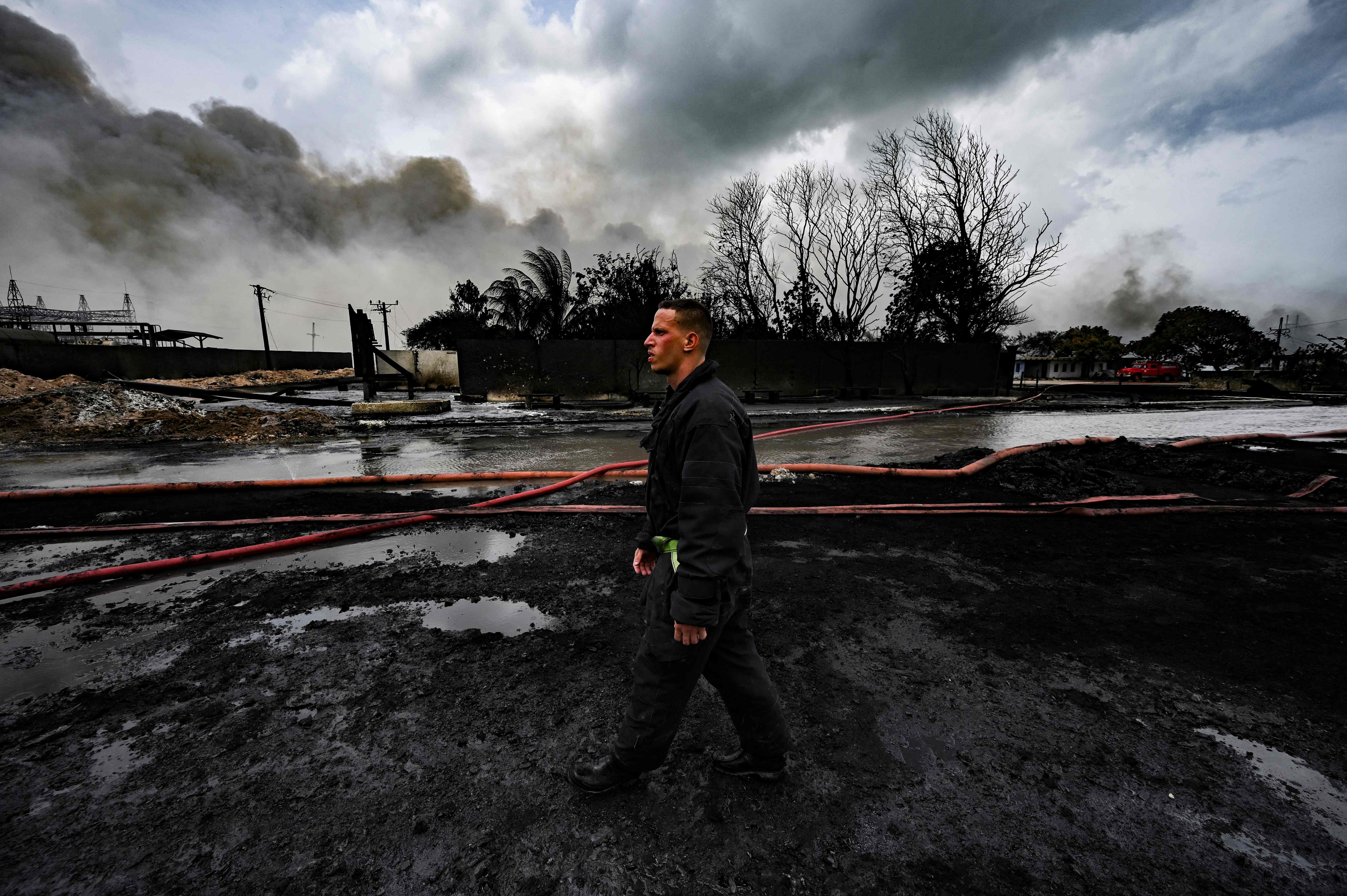
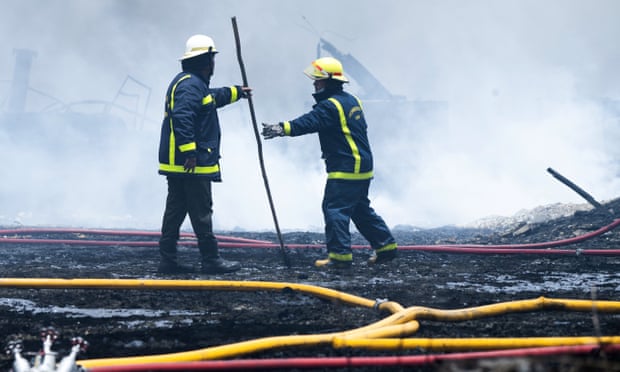 Firefighters work to put out a deadly firein Matanzas, Cuba, on 9 August.
Firefighters work to put out a deadly firein Matanzas, Cuba, on 9 August.